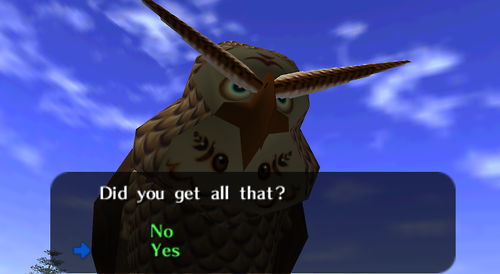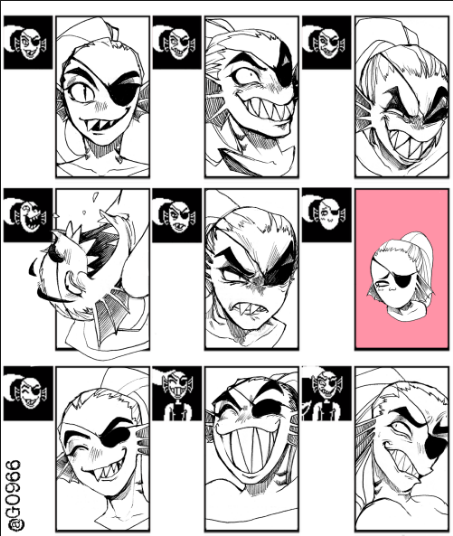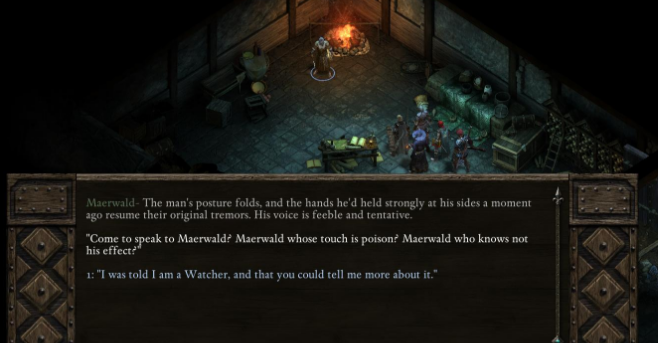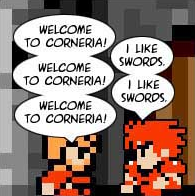Welcome to another edition of Feature Friday! Yet again we’re taking a deep dive into one of the many features and systems you can find in Village Monsters
Today, I’m going to talk about how conversing and dialog will work. Let’s take a look.

You’re going to be doing a lot of talking in Village Monsters. There will be villagers to build relationships with, merchants to barter with, and lore to be learned around every corner.
The actual text itself is of course important, but even more so than that is the delivery. How text and dialog is presented to the player is of utmost importance to how the world is shaped in their head.
In this post I’m going to focus on two specific strategies for communicating dialog with the player: The use of portraits, and the use of narrator text intermixed with dialog.
Robust Portraits
I probably don’t need to tell you that my professional background isn’t in art. It’s, uh…it’s rather self-evident, right?

While I may be unable to animate an entire sets of sprite to communicate what’s going on in a scene, I should have enough talent to handle portraits. As such, this is going to be a major focus of my time and effort when it comes to producing art for this game.
By way of example, I want to talk about the wonderful Undertale. Like me, Toby Fox isn’t exactly an artist,

but he uses an impeccable style and design to bring his characters to life. One of the many ways he accomplishes this is via his liberal use of character portraits.
Take a look of this list of Undyne expressions next to “artist interpretations”, by Tumblr user g0966

It doesn’t take much to communicate a wide range of emotions and personality of a character when making a portrait. There’s nothing in the way of animation here; it’s just purely good design. It’s a wonderful bang-for-your-buck approach that non-artists like me can use to make the most of our time.
It’s too early to share something of my own that’s the same level of quality, but here’s one little guy I’ve been working on – codenamed Signey

More on this guy later on in this post.
Narrator Text
Next up, I wanted to explain the usage of what I’m calling narrator text. Let’s use another example, this time with Obsidian’s excellent CRPG, Pillars of Eternity.
You can tell Obsidian was trying to make the most of their money and work within their own limitations. Like the Infinity Engine games before it, one of Pillar‘s biggest limitations is its small animation set – you have your walking, fighting, and magic casting, but not much else.
Nearly every non-combat encounter with an NPC is them standing in an idle animation – no gestures, moving faces, or other animations are there to give them life.
Their solution to this was brilliant: they use narrator text intermixed with dialog to help paint the scene.

I think this is a genius. Without animating a single frame you can picture Maerwald as a frail and terrified old man who is likely losing his mind.
Pillars is a big, epic, D&D-style RPG, and its narrator text reflects this, going so far as being on the same caliber in style and volume to a fantasy novel
Frankly, Village Monsters is simply not that, so there will be some key differences. Notably, sentences will be shorter and much less descriptive overall.
Here’s an example of what it looks like in my game:

The above GIF actually shows what it looks like to combine both a portrait and narrator text to communicate with the player.
I have a lot of plans for narrator text in this game. For one, the narrator won’t be some detached voice – it’ll be its own personality and have its own opinions on what’s going on.

I’m also going to use it communicate other things beyond dialog to the player. For example, in most RPGs when a character is “done” talking they’ll just loop what they said last.
In Village Monsters, I can instead let the narrator do the talking. Instead of repeating themselves, I can instead use narrator text to tell the player something like, “I don’t think this character has anything more to say”, or “The villager looks at you kindly before returning to work”. Same effect, but in a way that’s a bit more effective than repeating text.

Summarized in a different way, narrator text will be yet another method to inject some flavor into what is hopefully a delicious meal.
Talking Back
One area I’m not quite ready to talk about is the ability to talk back to villagers. Instead, I’ll talk a little about my philosophy.
Most important to me: your character won’t ever have any lines of its own.
This is a very deliberate choice for the style of game I’m going for. Consider the below two possible ways for a character to accept a quest:
- With a Voice: “Sure, I’d be happy to help look for your cat, Mrs. Seymour”
- Without a Voice: You agree to help find the cat.
The 2nd option is without a doubt drier than the 1st, but this is intentional. I want you, the player, to project your own vision onto the character. Would your version of the character say “happy to help”? Would they be so formal in addressing a person by their last name? Maybe, maybe not, but I want it to be up to you.
Nintendo is infamous for using this ‘excuse’ for explaining why Link doesn’t talk in any of the Legend of Zelda games, but I think it’s a smart and ultimately correct strategy. You are the player – this should be true in all aspects, even speech.
Despite this, there will be plenty of ways to ‘talk’ without just saying yes or no. More to come on that, and much more, in the coming weeks.
Leave a Reply
You must be logged in to post a comment.